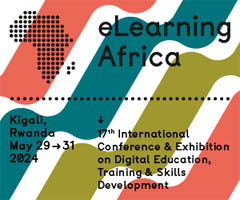"With Hands as well as Minds"
 Amsterdam (NL), November 2012 - "Creative Labs Transforming Higher Education" is the topic Frank Kresin from the Waag Society will talk about on Friday, 30 November 2012. The session will carve out how successful teachers encourage creativity: More freedom, fewer assignments, and the inclusion of fablabs and alternative pedagogical formats step away from the path of formal education. Frank Kresin describes how a creative lab works.
Amsterdam (NL), November 2012 - "Creative Labs Transforming Higher Education" is the topic Frank Kresin from the Waag Society will talk about on Friday, 30 November 2012. The session will carve out how successful teachers encourage creativity: More freedom, fewer assignments, and the inclusion of fablabs and alternative pedagogical formats step away from the path of formal education. Frank Kresin describes how a creative lab works.
How does a creative lab work in your lessons?
Frank Kresin: A creative lab is a physical working space that facilitates playful problem solving using hands-on practices. Students work intensely in multidisciplinary teams on complex challenges like designing products for sustainable living or layouts for cities that promote social behaviour. The lab provides a set of tools and raw materials that enable tinkering: the explorative development of mock-ups, prototypes and finished products. By working with their hands as well as their minds, students tap into a new mode of learning and gain a better understanding of the world that surrounds them. This leads to new perspectives and out-of-the box solutions.
In a typical course, students are introduced to the lab facilities, working practices, and the theories behind them. Then they are assigned challenges to be solved in groups that receive coaching by experienced designers. They research the problems, preferably on-site, query domain experts, and involve stakeholders. Then they get to work using the tools in the lab, developing gradually more mature prototypes that are tested by the prospective users. They present their work and receive feedback by their peers and experts on a regular basis. This goes on until the design is finished.
What conditions are necessary?
Frank Kresin: In several road trips in the Netherlands, we have visited well-functioning creative labs to learn about the conditions under which they work. These involve infrastructure, organisation, people, methods, themes, and networks. In my talk, I will outline our findings and invite the participants to apply them in their own practice. Three things stand out: the access to physical tools and raw materials; the availability of well-defined challenging problems; and a funding structure that enables the use of the lab in university courses.
Have the students' results been better? What are the advantages of the approach?
Frank Kresin: Both students and teachers typically love working in the lab. The hands-on approach motivates them to spend a lot of time and energy to come up with good results. The mock-ups and prototypes are excellent talking pieces, prompting discussion and further discoveries. Some students become so enthralled in their work that they continue after the course is over, even to a phase that they turn their solutions into a business.
What kind of effort is required on your part?
Frank Kresin: Waag Society, where I work, is a media lab, not an educational institution. We help universities and schools to implement new methodologies in their practices. Creative labs are one way to change education and prepare students for the multi-facetted tasks that they will encounter in their working lives. The world has become dramatically more complex and fast-paced, and I believe the creative lab approach will prove to be indispensible to deal with it. Almost everybody who has seen students work like this agrees. I am convinced that creative labs will spread and become an everyday tool in the toolbox of educators.









